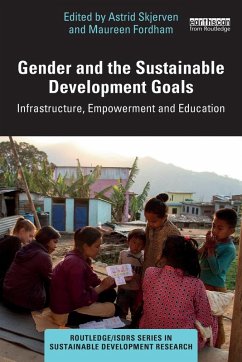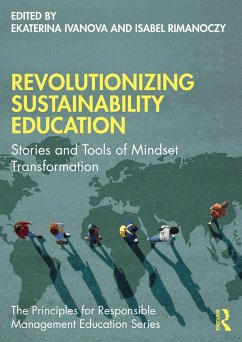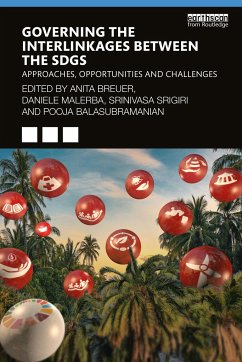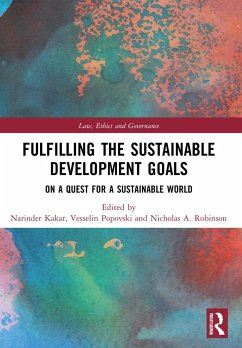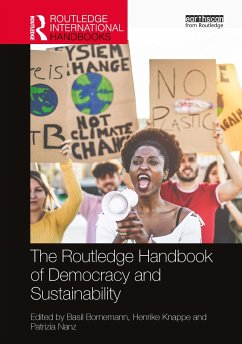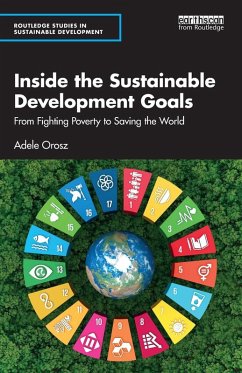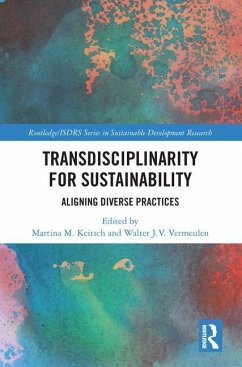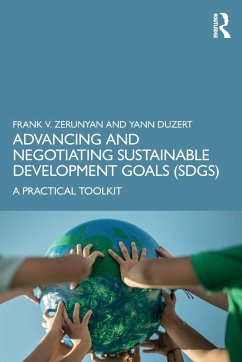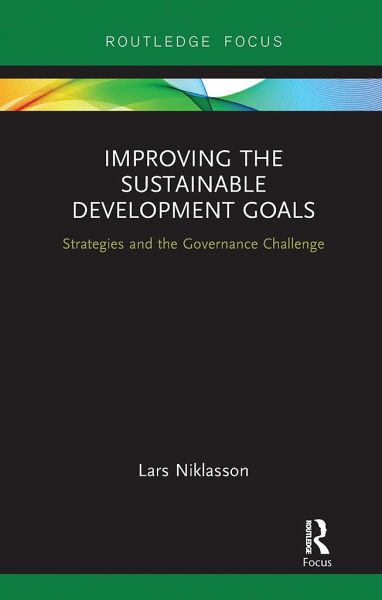
Improving the Sustainable Development Goals
Strategies and the Governance Challenge
Versandkostenfrei!
Versandfertig in 6-10 Tagen
25,99 €
inkl. MwSt.
Weitere Ausgaben:

PAYBACK Punkte
13 °P sammeln!
Improving the Sustainable Development Goals evaluates the Global Goals (Agenda 2030) by looking at their design and how they relate to theories of economic development. Adopted unanimously by the member states of the United Nations (UN) in 2015, the goals are remarkable for the global commitment on a set of targets to reach by 2030, but also for the lack of a strategy of implementation. The choice of appropriate action is handed over to individual governments, some of which are limited by their lack of resources.This book explores how implementation of the sustainable development goals (SDGs) ...
Improving the Sustainable Development Goals evaluates the Global Goals (Agenda 2030) by looking at their design and how they relate to theories of economic development. Adopted unanimously by the member states of the United Nations (UN) in 2015, the goals are remarkable for the global commitment on a set of targets to reach by 2030, but also for the lack of a strategy of implementation. The choice of appropriate action is handed over to individual governments, some of which are limited by their lack of resources.
This book explores how implementation of the sustainable development goals (SDGs) can be developed, especially in developing countries. The content, strengths and weaknesses of the SDGs are critically examined, alongside their relationship to ongoing academic research. The authors also investigate the actions of governments over the past three years by looking at the national strategies they have presented at annual meetings of the UN High-Level Political Forum.
Improving the Sustainable Development Goals takes a critical but constructive approach, pointing out risks as well as possible remedies. The SDGs are seen as an opportunity for a global conversation on what works in solving some fundamental problems relating to poverty and environmental degradation. With the inclusion of a chapter by Tobias Ogweno, former member of the Kenya's UN mission, this book will appeal to all those who are interested in policy analysis with a focus on development issues.
This book explores how implementation of the sustainable development goals (SDGs) can be developed, especially in developing countries. The content, strengths and weaknesses of the SDGs are critically examined, alongside their relationship to ongoing academic research. The authors also investigate the actions of governments over the past three years by looking at the national strategies they have presented at annual meetings of the UN High-Level Political Forum.
Improving the Sustainable Development Goals takes a critical but constructive approach, pointing out risks as well as possible remedies. The SDGs are seen as an opportunity for a global conversation on what works in solving some fundamental problems relating to poverty and environmental degradation. With the inclusion of a chapter by Tobias Ogweno, former member of the Kenya's UN mission, this book will appeal to all those who are interested in policy analysis with a focus on development issues.





